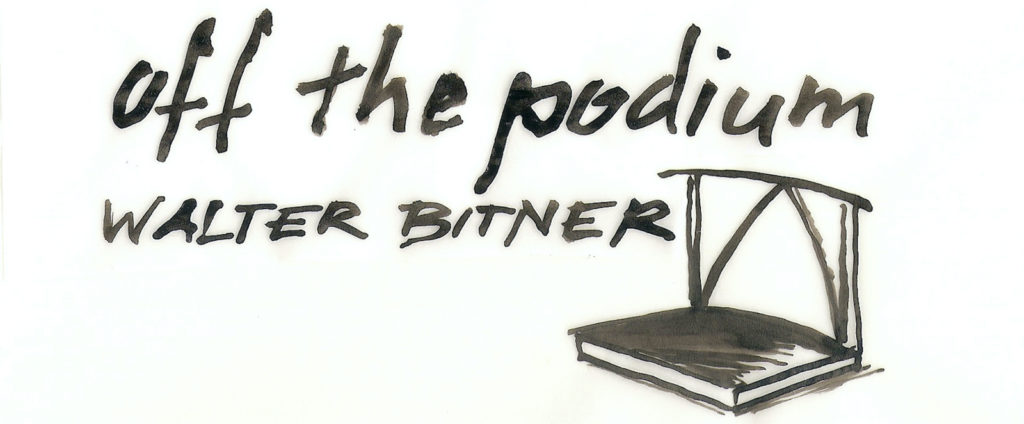
Solfège: Part 4: Teaching Modes with Solfège
Solfège: Part 5
Solfège Exercises
This episode in my series of posts on Solfège recounts examples of solfège exercises I used in high school choir rehearsals.
My usual practice was to begin every choir rehearsal with physical stretches followed by vocal warm-ups and solfège exercises (or both rolled into one) before beginning to work on the material the choir was preparing for performance. Any teacher or director who uses solfège will collect these sorts of exercises, games, and activities as ways to address or develop specific skills and competencies. For instance – and this is a common technique I believe – with children’s choirs trained on solfège and hand signs, one warm-up I frequently used was to split the choir into two groups and stand before them using Curwen hand signs with both hands, my left hand indicating what one half of the choir would sing and my right hand indicating for the other half. The simplest form of this exercise would be to hold one group on do while the other group sang the scale slowly and deliberately, tuning each interval, ascending and descending – and then repeating the same exercise reversing the role each group had played in the first time through the exercise. With more advanced children’s choirs I was able to do more developed and faster elaborations of this exercise, indicating the scale sung in canon or even freely improvised melodies with different hand signals in each hand – often to limits not dictated by the children’s abilities but by my own!
The “cumulative” exercise
One exercise I taught and used frequently I initially learned from students, who had learned it from a previous teacher. I later found that virtually every choir director or singer who used solfège knew/used this exercise. I never learned what it is called although I used it for years. I am calling it the cumulative exercise here.

The cumulative exercise is a good general warm-up and good for developing facility and fluency with the syllables. In my experience students who had learned this exercise took delight in singing it on their own as well, and enjoyed trying to sing it as fast as possible! One variation another choir director introduced me to is sing it eliminating one syllable, inserting an eighth rest in its place – for instance, sing it leaving out mi. This variation was sure to result in laughter from young singers, every time: a very good thing.
I used this exercise regularly but with one extrapolation/modification. In my experience I have observed school music teachers in general, when teaching scales or exercises, to concentrate primarily (or even exclusively) on the Major scale, largely ignoring minor scales altogether. I have never heard of (competent) private teachers doing this – it seems to be school music teacher phenomenon. I believe it comes from the competition-focused climate that (for the most part) instrumental music teachers function in. For instance, the local regional honors band and orchestra auditions (Mid-State and All-State) only require students to play Major scales, so for the most part, school music teachers do not teach minor scales – at least those I have met, observed, or spoken to about this. It’s basically an example of “teaching to the test”.
However, so much of the repertoire is in minor keys, and it is the other side – the shadow and complement of Major – of our entire tonal system. Since music literacy was always my goal as a teacher and I taught the solfège method (movable do with la-based minor) that is based on Major-minor relativity, I always tried to give both Major and minor equal emphasis in my program. So we sang the cumulative exercise in natural minor as well, every time we sang it.

Once students had mastered the cumulative exercise in both Major and minor – and for some reason descending natural minor in this exercise presented a greater challenge to a lot of us – we would also combine both together to add harmony to the exercise. For example, in a SATB mixed choir the tenors and basses could sing the Major while the sopranos and altos sang the minor, resulting in parallel harmony at the sixth:

After working on this for a bit we could then swap parts and sing it at the tenth – sopranos and altos singing Major and tenors and basses singing minor. Of course other variations are possible and any choir director is always on the look out for ways to keep warmups interesting! – so new ways to keep this sort of exercise fresh may occur on the spur of the moment to those who seek…
“La-ti-do-re-mi”
Another exercise I used frequently was invented by my friend and mentor Michael Graham.
Section the choir into three groups and assign each one a part. We would sing this through three times, each time starting a half step higher – until each section had sang each part. This exercise subtly teaches/reinforces understanding of relative and parallel key relationships as well as Major and minor triads, is a great warm up and…students would regularly beg to sing it.
©2015 Walter Bitner
Walter Bitner is a multi-instrumentalist, singer, conductor, and teacher, and serves as Director of Education & Community Engagement for the Richmond Symphony in Richmond, Virginia. His column Off The Podium is featured in Choral Director magazine, and he writes about music and education on his website Off The Podium at walterbitner.com.




Leave a Reply
You must be logged in to post a comment.